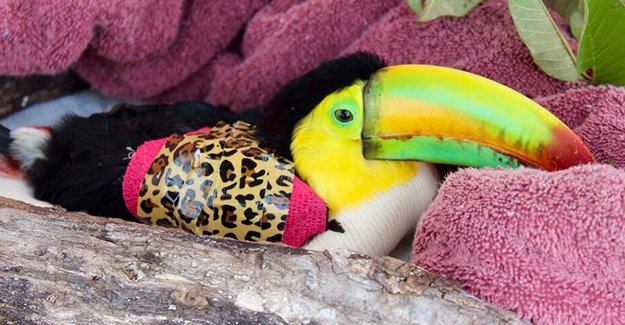Project AnimalAid gets supplies and equipment to organizations in need

Project AnimalAid started with one veterinarian, Candy Brad, DVM, who loved traveling and photographing wildlife. In her travels, she saw how local veterinary practices lacked basic supplies and equipment. She set out to gather excess inventory from her practice to send to veterinarians in need.
Originally named Project V.E.T.S.—for Veterinary Equipment, Technology, and Supplies—this nonprofit organization is now Project AnimalAid to clarify their mission and prevent confusion with organizations that work with veterans.
According to Maya Key, developmental manager for Project AnimalAid, they have grown significantly since their inception in 2009, and they are hoping to grow even more. They are currently looking for a larger warehouse so that they can accept more donations and add more groups from their waitlist to their more than 110 partner organizations around the world.
Key reports that over the years, the needs for basic supplies like IV catheters, bandaging material, syringes, and gloves have remained constant. The need for equipment such as monitors and ultrasounds, however, has increased. Thankfully, veterinary practices are upgrading their equipment more often, making their older equipment available for donation.
Where animals need help most in the US and abroad
Project AnimalAid serves recipients the world over, including many parts of Africa and Asia, remote islands, and multiple locations across the United States. Outside of the United States, recipients include organizations including the Tacugama Chimpanzee Sanctuary in Sierra Leone, the Victoria Falls Wildlife Trust in Zimbabwe, the Tsunami Animal-People Alliance in Sri Lanka, and The Global Alliance for Animals and People in Chile.
Key reports that there is a lot need for donated supplies in the US. Many of the US recipients are small nonprofit organizations and low-cost veterinary clinics with dwindling sources of funding. One of these nonprofits provides free spay/neuter services on Native American reservations, for which there continues to be huge demand. Other recipients focus on rescuing injured wildlife. “Sadly, the need for these services will probably never go away,” Key laments, and “funding will always be a struggle.”
Donations come in equal numbers from both human medical and veterinary sources, but the donations tend to be a little larger from the human side. “Veterinary medicine tends to have less overstock and waste than human medicine,” Key explains, so the veterinary donations “tend to be a little smaller, but equal in number.”
Desperate needs: from monitoring equipment to microscopes
Project AnimalAid tries to intervene with human healthcare providers who would normally dispose of unused, short-dated, or outdated supplies before they hit the landfill, since they can be easily repurposed for animal use with fewer regulations to prevent it. They have also received some very large donations from manufacturers and distributors who have extra or expired inventory. Key adds that most recipients are “perfectly happy” to use supplies that have expired the previous year.
At this time, many of their recipients are in “desperate need” of monitoring equipment, fluid pumps, microscopes, and blood analyzers. They are also always in need of absorbable suture, and Project AnimalAid accepts gloves and suture that is expired by up to two years. Key also stresses that they will accept outdated equipment, as long as it is in working order. They are currently not able to accept medication.
Project AnimalAid also runs a Pet Memorial Fund program, and they would love to add more hospitals to it. Veterinary clinics can choose to make donations in memory of patients who have passed away. Project AnimalAid sends the family a letter acknowledging the donation that was made in their pet’s honor. “It’s a lovely way for the veterinary hospital to pay tribute to their patient and client,” Key offers, “and support a good cause.”
Further reading
Project AnimalAid (formerly Project V.E.T.S.) website:
https://www.projectvets.org
Emily Singler, VMD, is a 2001 graduate of Penn State University and a 2005 graduate of University of Pennsylvania School of Veterinary Medicine. She has worked in shelter medicine, private practice, and as a relief veterinarian. She currently works as a veterinary writer and consultant and has her own blog, www.vetmedbaby.com.
Photo courtesy of Project AnimalAid
Disclaimer: The views expressed, and topics discussed, in any NEWStat column or article are intended to inform, educate, or entertain, and do not represent an official position by the American Animal Hospital Association (AAHA) or its Board of Directors.



